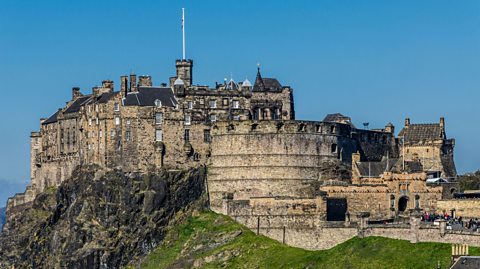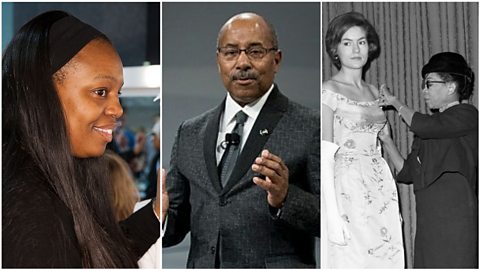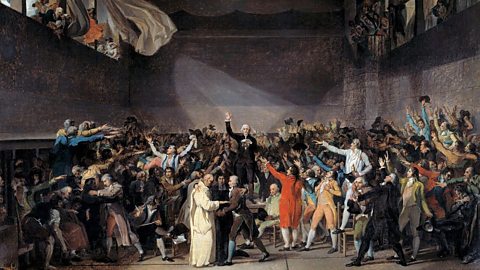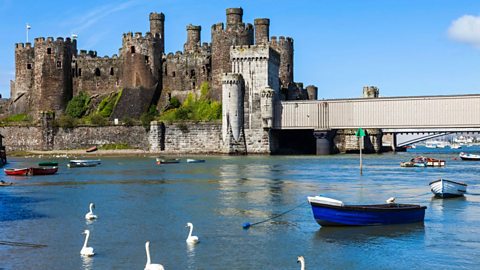In towns and cities across the country, among the famous landmarks and significant moments in history, there are also often plenty of hidden gems.
These amazing stories may have shaped the lives of local communities or had a cultural impact across the UK, despite not necessarily being widely known.
┤¾¤¾┤½├¢ Bitesize shines a light on some of the lesser known places across the country that helped shape black history.
Edinburgh Castle, Edinburgh
When talking about black history in the UK, people rarely recall the existence of black people in 15th Century Scotland, such as the story of two African women named Ellen and Margaret More.
They were first recorded as living in Scotland in 1505 and were servants to King James IV and Queen Margaret Tudor. They travelled with the royal couple but mostly lived with them at Edinburgh Castle.

Ellen More was given a favoured position among the Queen's attendants. She was named the lady of the tournament of the black knight in 1507, an honour given to her for being considered the most beautiful lady of the court. Ellen played the role in successive years, with the king entering the jousting competition himself in order to win her hand.
Town Meadows, Rochdale
In Victorian Britain in the 19th Century, audiences across the country enjoyed watching performances by Pablo Fanque, who was the first black circus owner in England. Fanque, whose real name was William Darby, was born in Norwich and began his circus career as an apprentice in 1821.
His touring show was incredibly popular and while his act included tightrope walking, he was most famous for horse riding. One of the most iconic performances was held in 1843 in Town Meadows, Rochdale ÔÇô now home to a police station.
The Rochdale show was so popular that The Beatles wrote a song about it in 1967 called ÔÇÿBeing for the Benefit of Mr Kite!ÔÇÖ. John Lennon discovered a vintage poster for the show which included the phrase used as the songÔÇÖs title and the track was included on the iconic album Sgt. Pepper's Lonely Hearts Club Band.
Derrymore House, County Armagh
Between 1942 and 1945, Britain and Northern Ireland saw many American soldiers arrive to support troops during World War Two.
Approximately 130,000 of these new soldiers were African Americans and many of them were based in Northern Ireland for training. The American troops were still segregated at the time, with black soldiers stationed in huts in the woods around Derrymore House in Bessbrook.
Their arrival was met with excitement in the region and newspaper reports from the time said that locals embraced the troops as equals.
The African American soldiers not only provided wartime support, but also introduced local Northern Irish residents to their culture ÔÇô with many soldiers continuing to write to Bessbrook locals after WW2.
Trevenson Church, Redruth, Cornwall
After WW2, Britain saw a huge rise in arrivals from around the world to help rebuild and to work in this country.
Among these were African students who came to study in British colleges and universities. While most lived in cities like London, there were a few instances of black people moving to slightly more rural areas.
In 1964, two students living in Cornwall were filmed getting married at Trevenson Church in Cornwall. In the first half of the day, they wore traditional British wedding clothing before changing into a Nigerian Ankara outfit.
The film was archived by the South West Film and Television Archive and illustrated a remarkable moment of British and African cultures merging in 1960s Britain as the local congregation came out to celebrate the newlywedsÔÇÖ special day.
Capitol Shopping Centre, Cardiff
ItÔÇÖs now home to a cinema, gym, clothes and coffee shops ÔÇô but the Capitol Shopping Centre was once the site of an iconic black music performance.

In March 1965, American singers from the Motown record label came to the UK as part of their international Tamla-Motown Revue tour. These acts included Stevie Wonder, Smokey Robinson & the Miracles and Diana Ross & the Supremes.
The tour took in 21 towns in 24 days ÔÇô including Cardiff at the Capitol theatre, now the shopping centre. But the shows were poorly attended - Supremes member Mary Wilson referred to it as the ÔÇ£ghost tourÔÇØ. Those who did attend (for just 15 shillings, around ┬ú4) were treated to a spectacular series of concerts that celebrated their 50th anniversary at the V&A Museum in 2015.
Collingham Gardens, London
The docking of the HMT Empire Windrush in 1948 marked the arrival of more than 1,000 passengers from the West Indies. These new arrivals brought many aspects of their culture to Britain and celebrated their identity through art, music and writing.
In 1966, John La Rose, Kamau Braithwaite and Andrew Salkey founded the Caribbean Artists Movement (CAM), which was based at the West Indian StudentsÔÇÖ Centre in Collingham Gardens, in EarlÔÇÖs Court, London.
The CAM brought creative people from the West Indies together to celebrate and promote their work. While only active for just over five years, the CAM is credited with raising awareness and popularity of the work of black artists in Britain.
This article was published in October 2021

Black History Month: Pioneers who became creative industry legends
They led the way in fashion, make-up and car design

Debunking the myths of the French Revolution
We uncover the truth about Marie Antoinette, equality and Les Miserables.

Five UK castles steeped in folklore
The stories behind the legends that fascinate visitors
